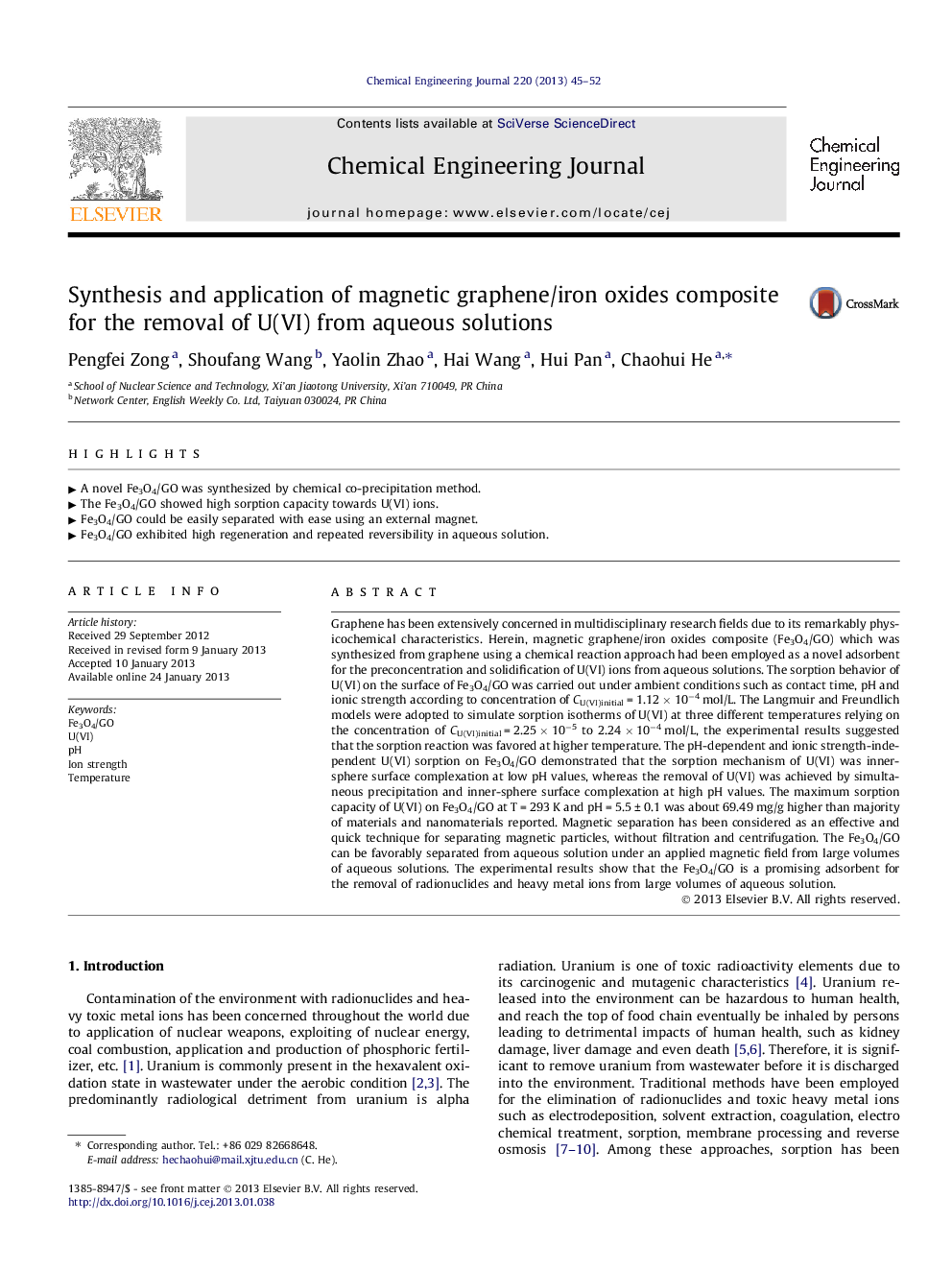| Article ID | Journal | Published Year | Pages | File Type |
|---|---|---|---|---|
| 148608 | Chemical Engineering Journal | 2013 | 8 Pages |
Graphene has been extensively concerned in multidisciplinary research fields due to its remarkably physicochemical characteristics. Herein, magnetic graphene/iron oxides composite (Fe3O4/GO) which was synthesized from graphene using a chemical reaction approach had been employed as a novel adsorbent for the preconcentration and solidification of U(VI) ions from aqueous solutions. The sorption behavior of U(VI) on the surface of Fe3O4/GO was carried out under ambient conditions such as contact time, pH and ionic strength according to concentration of CU(VI)initial = 1.12 × 10−4 mol/L. The Langmuir and Freundlich models were adopted to simulate sorption isotherms of U(VI) at three different temperatures relying on the concentration of CU(VI)initial = 2.25 × 10−5 to 2.24 × 10−4 mol/L, the experimental results suggested that the sorption reaction was favored at higher temperature. The pH-dependent and ionic strength-independent U(VI) sorption on Fe3O4/GO demonstrated that the sorption mechanism of U(VI) was inner-sphere surface complexation at low pH values, whereas the removal of U(VI) was achieved by simultaneous precipitation and inner-sphere surface complexation at high pH values. The maximum sorption capacity of U(VI) on Fe3O4/GO at T = 293 K and pH = 5.5 ± 0.1 was about 69.49 mg/g higher than majority of materials and nanomaterials reported. Magnetic separation has been considered as an effective and quick technique for separating magnetic particles, without filtration and centrifugation. The Fe3O4/GO can be favorably separated from aqueous solution under an applied magnetic field from large volumes of aqueous solutions. The experimental results show that the Fe3O4/GO is a promising adsorbent for the removal of radionuclides and heavy metal ions from large volumes of aqueous solution.
► A novel Fe3O4/GO was synthesized by chemical co-precipitation method. ► The Fe3O4/GO showed high sorption capacity towards U(VI) ions. ► Fe3O4/GO could be easily separated with ease using an external magnet. ► Fe3O4/GO exhibited high regeneration and repeated reversibility in aqueous solution.
